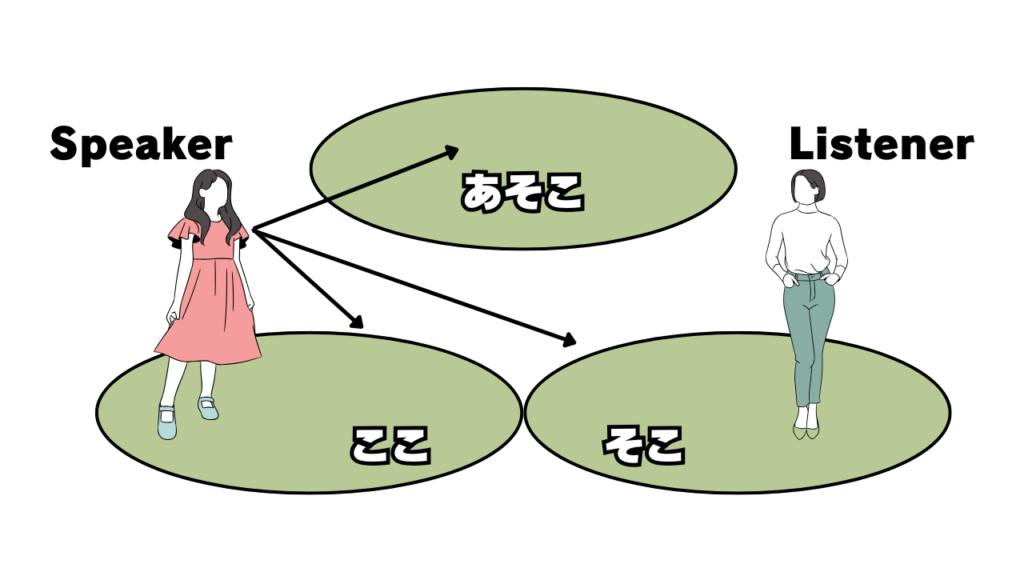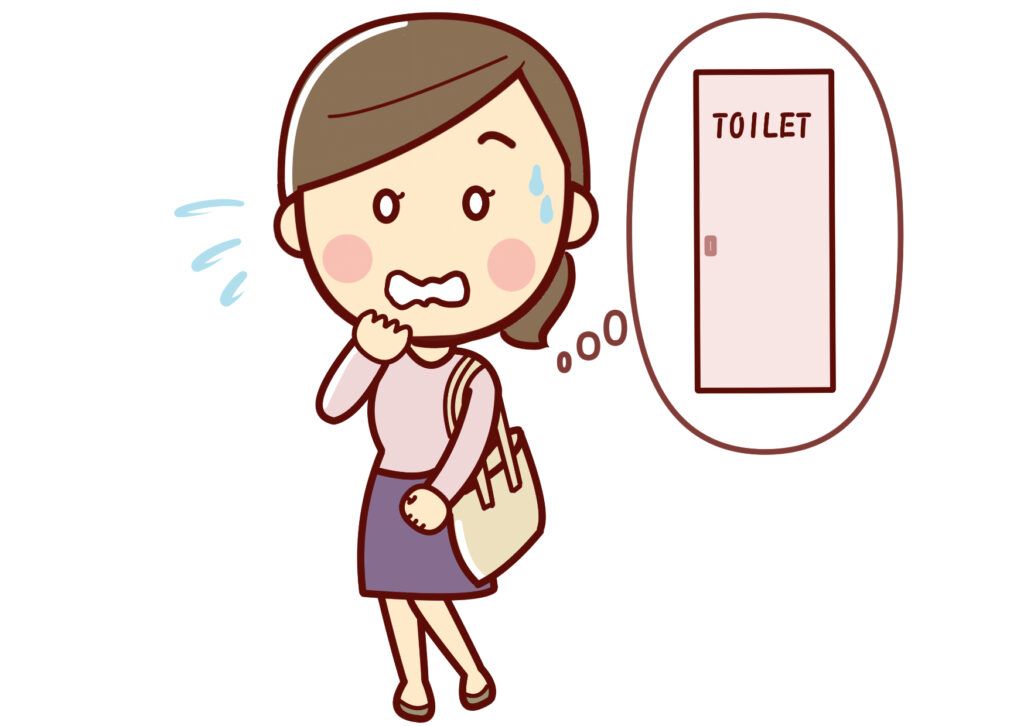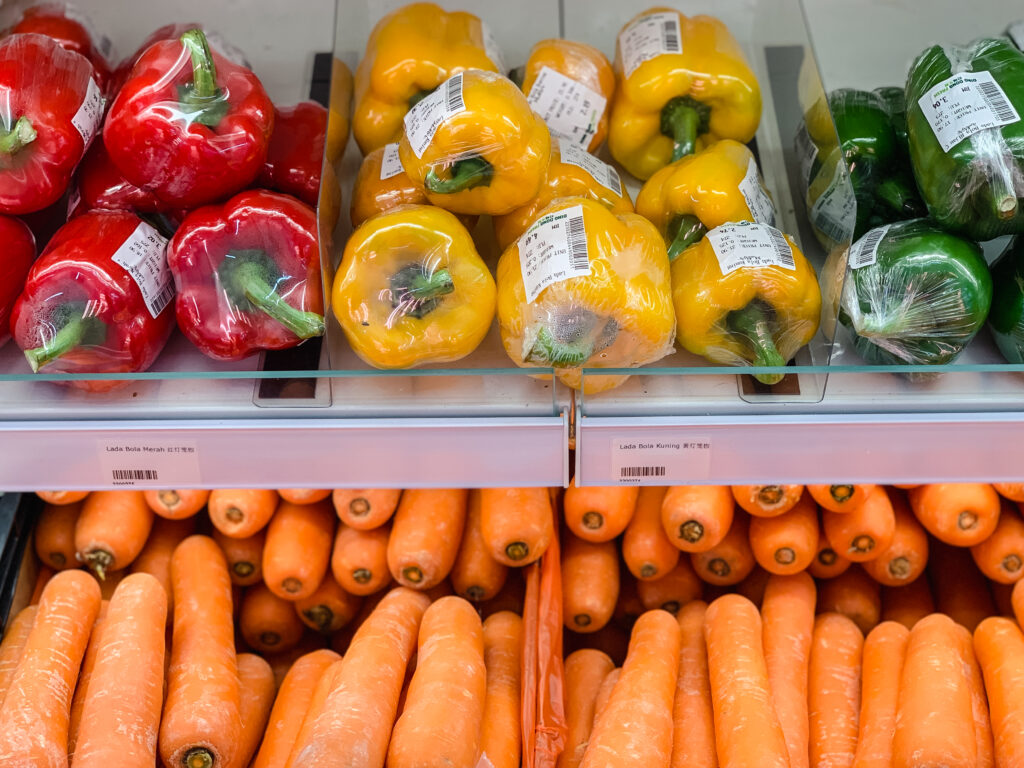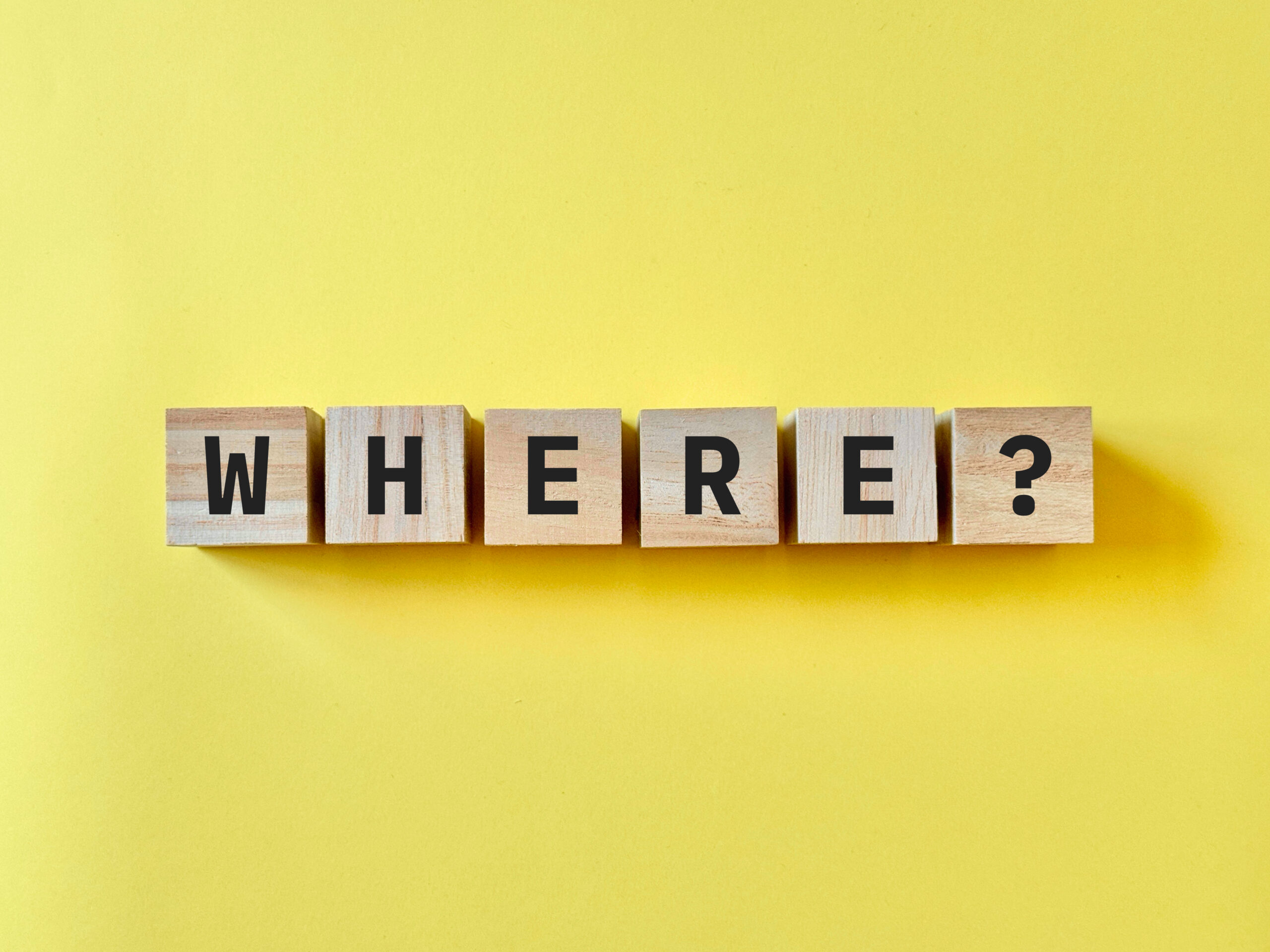ここそこあそこどこ
Grammar meaning
"ここそこあそこどこ" are grammar terms used to describe the spatial relationship between the speaker and the listener.
Their concept is very similar to “これそれあれどれ", so if you haven’t studied “これそれあれどれ" yet, please check the link below to learn about them first.
While “これそれあれどれ” is mainly used for objects, “ここそこあそこどこ” is used for locations.
The place where the speaker is located is “ここ,” the place where the listener is located is “そこ,” a place that is neither where the speaker nor the listener is located is “あそこ,” and when asking about an unknown place, the question word “どこ” is used.

Also, it might be helpful to study “このそのあのどの” along with the current grammar to better understand the connections between them.
Example sentence
・ここからわたしのいえまで5分ぐらいかかります。
It takes about five minutes from here to my house.
・かばんはそこにおいてください。
Please put the bag there.
・あそこは日本語の学校です。
That place over there is a Japanese language school.
・Q:トイレはどこですか。
Q: Where is the restroom?
A:トイレはあそこですよ。
A: The restroom is over there.

Additional notes
“ここ” tend to have more overlapping areas compared to “これ”.
For example, when two people in the same classroom talk about the size of the room, it would be used as follows.
Q:ここはせまいですね。
Q: This place is small, isn’t it?
A:うん。ここはわたしのへやよりせまいですよ。
A: Yeah. This place is smaller than my room.
Conversely, “そこ” is never used by both speakers to refer to the same place. The roles of using “ここ” and “そこ” are always divided between the speaker and the listener.
(in normal location-related conversations)
Since “あそこ” refers to a place that is not where either speaker is, both parties will typically use “あそこ” to refer to the same location.
As for “どこ”, if neither party knows the location, they might both use it. However, in most cases, one person asks with “どこ”, and the other responds using “ここ” “そこ” or “あそこ”.
Conversation example
あなた:ここはわたしのまちでいちばん大きいデパートです。
友だち:へぇ、あそこは何ですか。
あなた:あそこはやさいうりばです。
友だち:そうなんですね。にくやさかなもうっていますか。
あなた:はい。にくはあそこでさかなはあそこですね。
友だち:いろいろなものがうっていますね。
わたしは飲みものを買いたいです。どこにありますか。
あなた:飲みものはあなたのとなりです。そこですよ。
You: This is the biggest department store in my town.
Friend: Oh, what is that over there?
You: That is the vegetable section.
Friend: I see. Do they also sell meat and fish?
You: Yes. The meat is over there, and the fish is over there as well.
Friend: They sell a lot of different things here.
I want to buy a drink. Where can I find it?
You: The drinks are right next to you. They’re over there.

For Japanese Teachers
“ここそこあそこどこ” is similar in concept to “これそれあれどれ,” so it’s often taught at the same time.
If taught separately, it’s helpful to review “これそれあれどれ” before introducing this grammar.
Additionally, like “これそれあれどれ,” “ここそこあそこどこ” can cause contradictions depending on the teacher’s and students’ positions.
Be mindful of your positioning and presentation during class to avoid confusing students.





